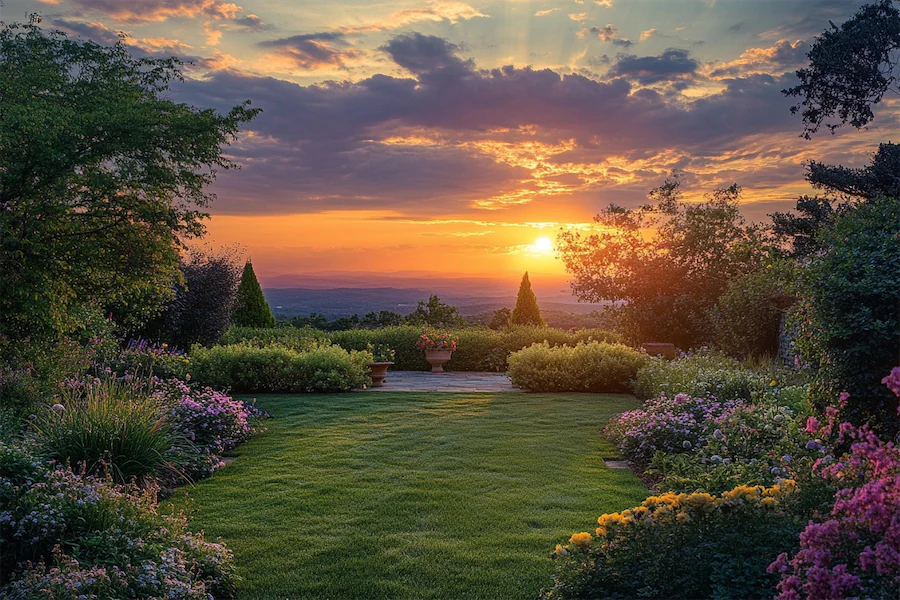A “Sunset View Garden” is a thoughtfully designed outdoor space that maximizes the beauty of sunsets, creating a serene environment for relaxation and reflection. By strategically positioning seating areas and selecting appropriate plantings, these gardens offer unobstructed views of the horizon, allowing occupants to fully immerse themselves in the natural spectacle of the setting sun.
History and Origins of Sunset View Gardens
The concept of integrating natural vistas into garden design has historical roots in various cultures. For instance, traditional Japanese gardens often frame specific landscape views, including sunsets, to evoke emotional responses and contemplation. Similarly, English landscape gardens of the 18th century were designed to incorporate picturesque views, emphasizing harmony between the constructed garden and the surrounding natural scenery.
Key Features of Sunset View Gardens
Sunset View Gardens typically include the following elements:
- Elevated or West-Facing Locations: To capture the best sunset views, these gardens are often situated on elevated terrains or designed with west-facing orientations.
- Open Spaces: Minimizing tall structures or dense plantings in the sightline ensures an unobstructed view of the sunset.
- Reflective Water Features: Incorporating ponds or pools can mirror the colors of the sunset, enhancing the visual experience.
- Comfortable Seating: Benches or lounge areas are strategically placed to offer optimal viewing comfort during sunset hours.
- Subtle Lighting: Soft, ambient lighting extends usability into dusk, creating a warm and inviting atmosphere.
Applications of Sunset View Gardens
In modern architecture and landscape design, Sunset View Gardens serve various purposes:
- Residential Retreats: Homeowners create these gardens to provide a daily escape, fostering relaxation and well-being.
- Hospitality Settings: Hotels and resorts design sunset gardens to enhance guest experiences, offering unique dining or leisure spaces.
- Public Parks: Urban planners incorporate sunset viewing areas to enrich community spaces, encouraging social interaction and connection with nature.
Considerations When Designing a Sunset View Garden
When planning a Sunset View Garden, consider the following:
- Site Analysis: Use tools to simulate sun paths and shadows, ensuring optimal placement of features.
- Plant Selection: Choose plants that thrive in the local climate and won’t obstruct views as they mature.
- Sustainable Practices: Incorporate native plants and water-efficient designs to promote environmental sustainability.
- Maintenance: Design with low-maintenance materials and plantings to ensure the garden remains enjoyable without excessive upkeep.
Conclusion
Sunset View Gardens blend aesthetic beauty with thoughtful design, creating spaces that celebrate the daily spectacle of the setting sun. By considering historical influences and modern applications, these gardens offer timeless appeal and a sanctuary for reflection.
